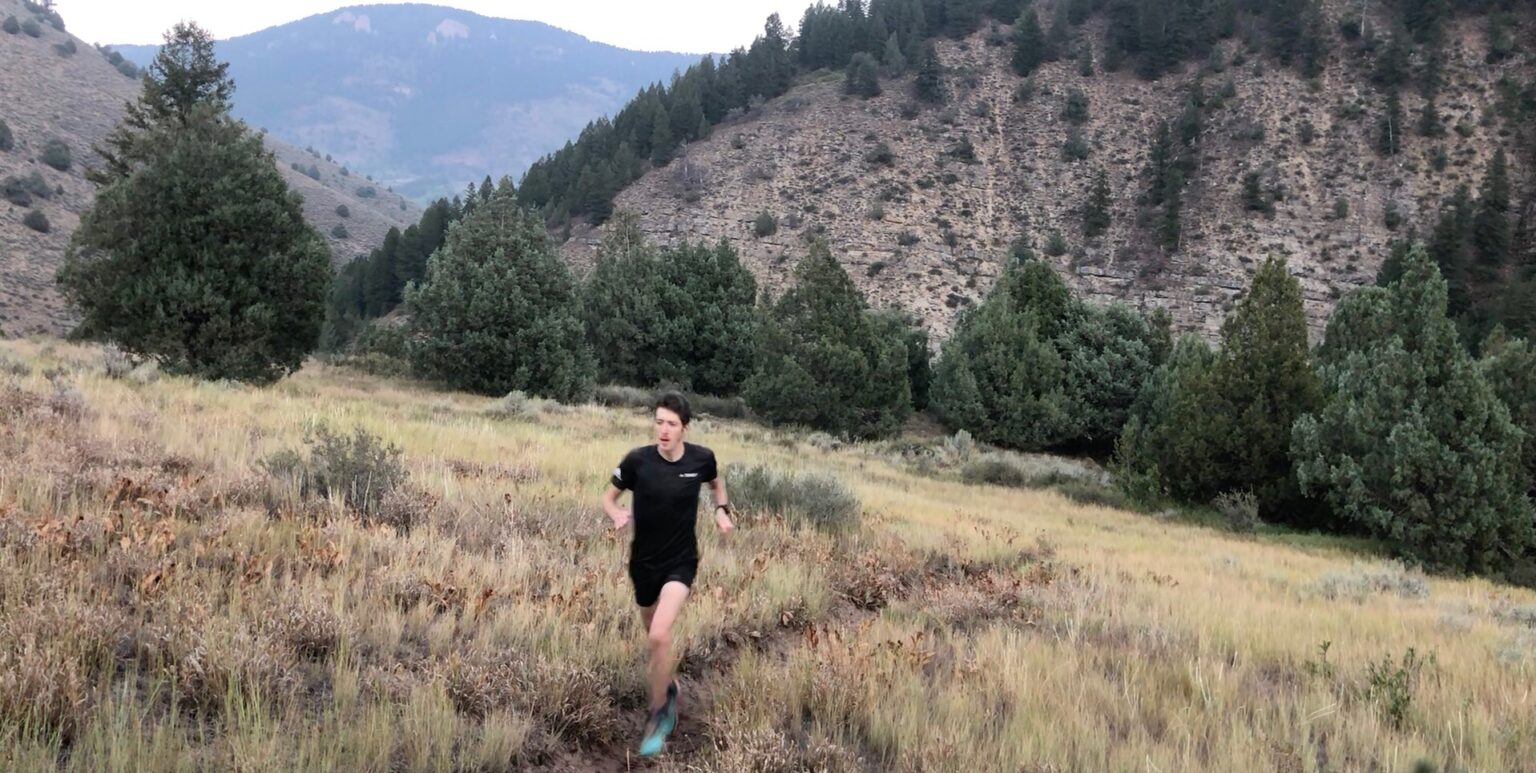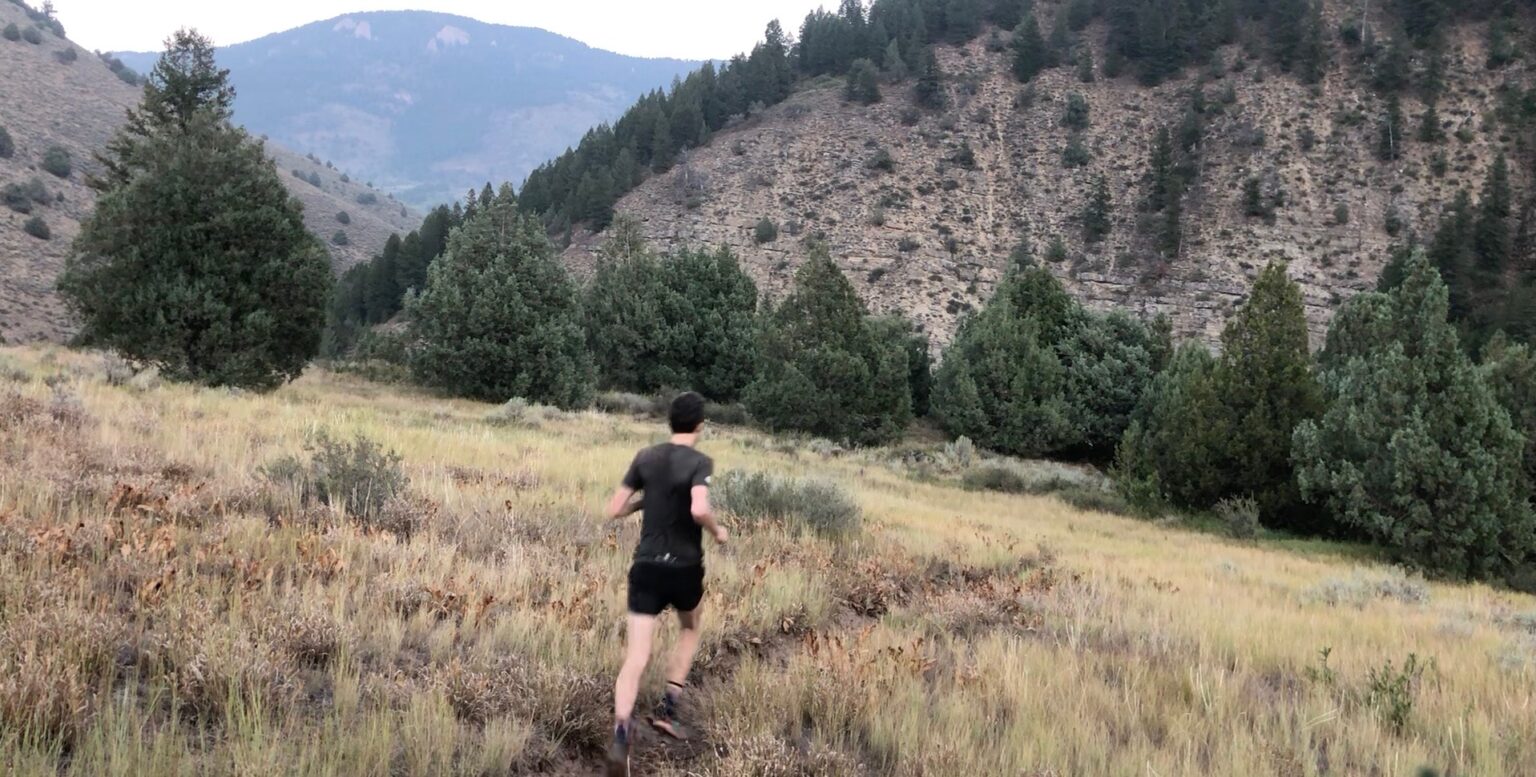Hoka One One Zinal
Test Locations: Logan, Utah
Test Duration: 100 miles
Stated Stack Height: 32 mm (heel) / 27 mm (forefoot)
Stated Heel-to-Toe Drop: 5 mm
- Stated Features:
Mesh upper derived from recycled yarn with gusseted tongue to keep debris out. - Toe bumper for protection
- Molded EVA Sockliner
- PROFLY construction Early stage Meta-Rocker
- Vibram Megagrip Litebase outsole compound with 4mm lugs
Reviewer: 6’1″, 145 lbs / 185 cm, 66 kg
Size Tested: US Men’s 11.5
Stated Weight per Shoe (US Men’s Size 9): 241 g / 8.5 oz
Blister Measured Weight (US Men’s 11.5):
- Shoes + Laces: 259 g (left) & 262 g (right)
- Insoles: 20 g (left) & 19 g (right)
- Total: 316 g (left) & 322 g (right)
MSRP: $160.00
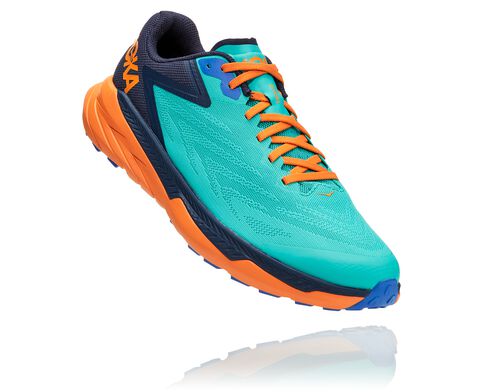
Intro
As we’ve said before, you probably know Hoka One One best for their super high-stack, high-cushion shoes. That said, I’ve also been continually impressed by the brand’s lighter, lower-stack trail shoes in recent years. In my opinion, shoes like the Hoka EVO Jawz and Speed Instinct 2 did a great job of blending the cushion and comfort that the brand is known for with the lightweight, speed-oriented features that I look for in a race-day shoe.
So with that in mind, I was pretty excited to try out Hoka’s newest entry into the lightweight trail racing shoe category: the Zinal. According to Hoka, the Zinal is a lower-profile, lighter shoe that excels on shorter, faster runs and races and in more technical terrain. Based on that description, I was particularly curious to see how the Zinal compared both to other lightweight / speed-oriented shoes from Hoka and to trail racing shoes from other brands. After my first 100 miles in the Zinal, I agree with Hoka that the shoe delivers a good “blend of speed and agility” — but I’m not completely convinced that the Zinal is really best suited to short, fast runs on technical terrain. In this review I’ll break down why.
Fit
As always, the best way to figure out whether or not the Zinal will fit your foot is to try it on in person. With that said, I’ll provide some context on how the Zinal fits my fairly narrow, low-volume feet and on how it compares to other shoes I’ve run in.
First off, the Zinal seems to run just a bit long compared to both other Hoka shoes and shoes from brands like Altra, Inov-8, and Salomon. I’ve tested a US Men’s 11.5 for shoes like the Hoka EVO Speedgoat, EVO Jawz, and Carbon X2, and the length seemed about right in all of those shoes — but in the Zinal, I have a decent amount of extra space between my toes and the front of the shoe. It’s not enough to make the shoe feel sloppy, but I do think I’d get a more precise fit if I sized down a half size. So if you are on the fence about which size to get in the Zinal, my advice would be to go with the smaller of your two options.
Sizing aside, the Zinal fits very similarly to other Hoka trail shoes I’ve tested. Much like the EVO Speedgoat, the Zinal has a fairly narrow toe box. There’s definitely much less space for toe-splay in the Zinal than in roomier shoes like the Altra Timp or Topo Mtn Racer 2, but the Zinal’s fairly stretchy upper material makes that narrow width more tolerable. Still, If you have particularly wide feet and / or like shoes with wider toe boxes, the Zinal might feel a little narrow.
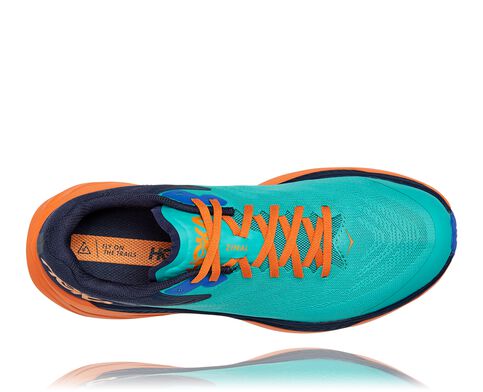
The fit through the Zinal’s midfoot and heel also feels fairly similar to the EVO Speedgoat — secure, but not as locked-down as a shoe like the La Sportiva Cyclon or Adidas Terrex Speed Ultra. If anything, the Zinal feels slightly less secure than the EVO Speedgoat on off-camber, steep terrain, which I attribute mostly to the shoe’s fairly minimal and somewhat flimsy-feeling upper (more on that later).
Overall, I think the Zinal has some room for improvement as far as fit is concerned. The toe box does provide a little bit of room for toe-splay thanks to the stretchy upper material, but I still felt like my toes were being pushed together much more in the Zinal than they would be in a shoe like the Topo Mtn Racer 2. At the same time, the Zinal’s midfoot and heel don’t feel quite as secure as I’d like on technical, steep terrain. With all that said, I haven’t had any issues with blisters or hot spots in the Zinal, and it’s definitely plenty secure and comfortable for less technical terrain. So if you don’t mind a slightly narrower toe box and / or don’t run in lots of steep, technical terrain, I think the Zinal’s fit won’t cause any problems.
Weight
Weight is definitely one of the Zinal’s major selling points — with a stated weight of 241 g / 8.5 oz, the Zinal is one of the lightest options in my current trail running shoe lineup. Add in the fact that the Zinal still has a fairly substantial 32 mm / 27 mm stack height, and that stated weight becomes even more impressive. Still, it isn’t alone in the category of lightweight, higher-stack trail racing shoes — for a more direct comparison, here’s how the Zinal stacks up to a few similar shoes from other brands (all stated weights are based on a US Men’s Size 9):
176 g / 6.2 oz — Salomon S/Lab Pulsar
241 g / 8.5 oz — Altra Superior 5.0
241 g / 8.5 oz — Hoka One One Zinal
258 g / 9.1 oz — adidas Terrex Speed Ultra
258 g / 9.1 oz — Hoka One One Torrent 2
269 g / 9.5 oz — Brooks Catamount
270 g / 9.5 oz — Inov-8 Terraultra G 270
283 g / 10.0 oz — Nike Zoom Terra Kiger 7
286 g / 10.1 oz — Topo Athletic Mtn Racer 2
There are lighter medium-cushion shoes on the market, but the Zinal is as light or lighter than most of them (with the exception of the Salomon S/Lab Pulsar, which is honestly a bit of an outlier). More importantly, the Zinal feels very light on trail. Everything about it, from the minimal, breathable upper to the light, springy midsole gives the shoe a much lighter feel than just about any other shoe I’ve recently run in. Part of that can definitely be attributed to the fact that the Zinal just doesn’t weigh much — but I also think where on the shoe that weight is (or rather, isn’t) plays a role.
The Zinal uses Vibram’s new MegaGrip Litebase outsole, which Vibram claims is 30% lighter than their traditional MegaGrip outsole compound. On top of that, the Zinal’s outsole only has actual outsole rubber in the forefoot and heel — the rest is just exposed midsole foam. The net result is that the majority of the Zinal’s weight stays closer to the foot, which I definitely think makes the shoe feel even lighter than it actually is. That’s basically just a super long-winded way of reiterating what I’ve already said, but I think it’s worth saying again — from a weight perspective, the Zinal is pretty hard to beat in the category of medium-stack, speed-oriented shoes.
Upper
As I’ve said a couple of times throughout this review, the Zinal’s upper is extremely light and minimal. The mesh used for the upper is also made from recycled yarn — bonus points to Hoka on the sustainability side of things. Aside from that, the Zinal’s upper keeps things pretty simple. It does have a fairly minimal toe bumper, but I can tell you from experience (I have a knack for kicking rocks mid-run) that it doesn’t provide a whole lot of protection from toe-stubbing. The rest of the upper is just a single layer of mesh, which I’ve found to be extremely breathable and quick-drying.
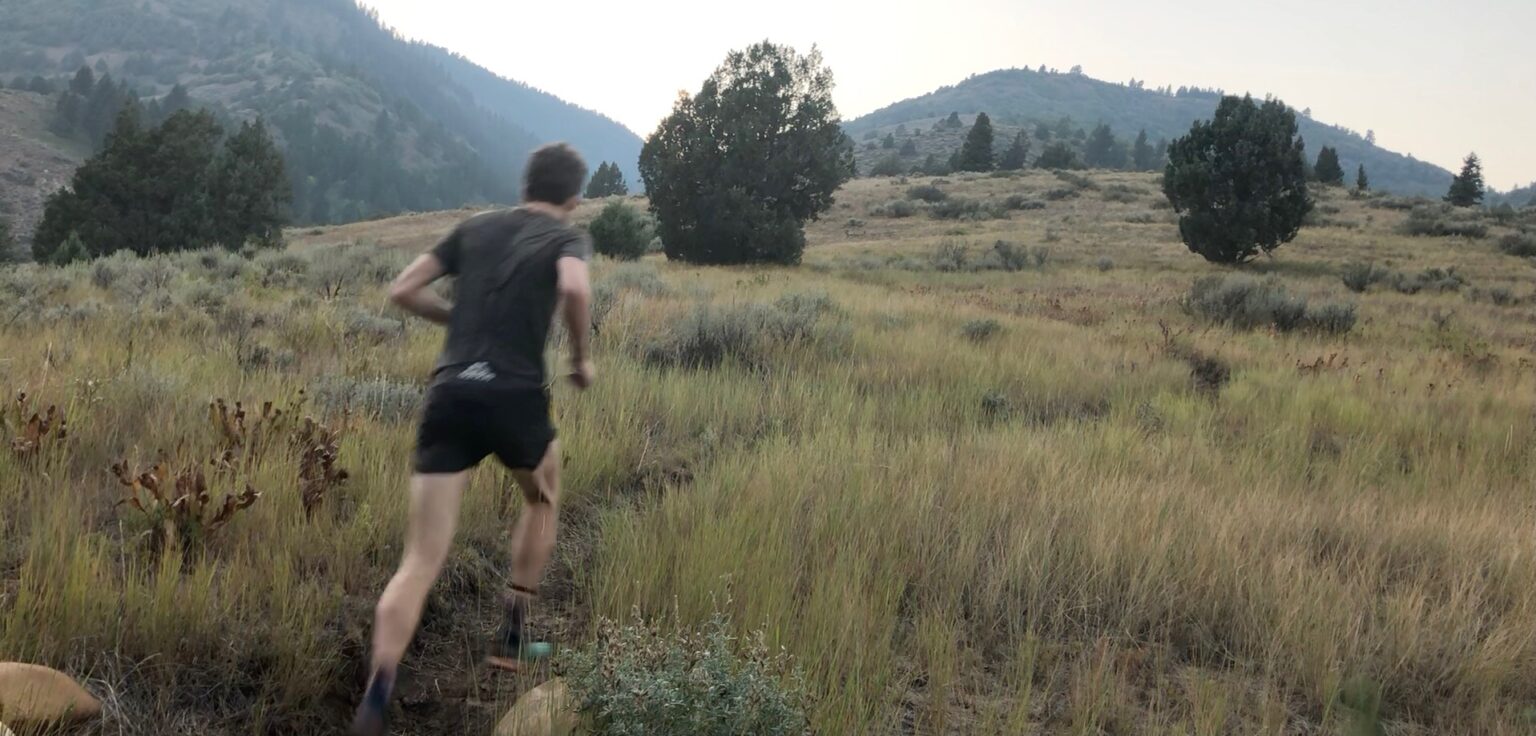
Both sides of the tongue are anchored to the midsole with an elastic gusset, which helps keep out debris and lock down the Zinal’s midfoot a bit. The tongue itself is thin, but provides just enough cushion to protect the tops of my feet from the lacing system.
Speaking of the laces — the Zinal’s lacing system is the one part of the shoe’s upper that raises some concerns for me. First and foremost, the lace eyelets are basically just holes punched out of the upper material with very minimal reinforcement (aside from the top two, which have a synthetic overlay around them). That’s great for weight-saving purposes, but I’m definitely a bit concerned about how long they’ll hold up. I always tie my shoes fairly tightly, and I’m already seeing a fair amount of stretching in the middle two eyelets on both sides. That’s a little concerning after only 100 miles of use, and it seems like it’s only a matter of time before one of them rips.
I also think the upper would feel a bit more secure if Hoka added a few overlays that connect the lacing system to the midsole. Again, I get that Hoka’s trying to keep the weight down here, but the lack of structure in the upper makes it kind of hard to get the Zinal really locked down, in my experience. Even with the laces really cranked down, the stretchy, unstructured upper allows for a fair amount of lateral foot-slippage on off-camber, steep trails. Personally, I’d be fine with a few extra grams worth of weight in exchange for more durable eyelets and a bit more structure in the upper — but aside from those fairly minor gripes, I think the Zinal’s upper does its job well.
Midsole
The Zinal uses the same PROFLY two-piece midsole design found on shoes like the Hoka Carbon X2 (just without the carbon fiber plate). PROFLY is essentially a rubberized EVA foam, which Hoka says gives the shoe a “uniquely soft and snappy ride.” I mostly agree, although I honestly wasn’t blown away by the Zinal’s midsole. It does feel reasonably soft on landing and provides a respectable amount of energy return, but in my opinion, the Zinal’s cushioning feels fairly average from both a comfort and an energy-return perspective. It isn’t nearly as soft and plush-feeling as a shoe like the Adidas Terrex Two Ultra Parley, but it also doesn’t have the same spring-like feel as something like the Hoka Evo Speedgoat.
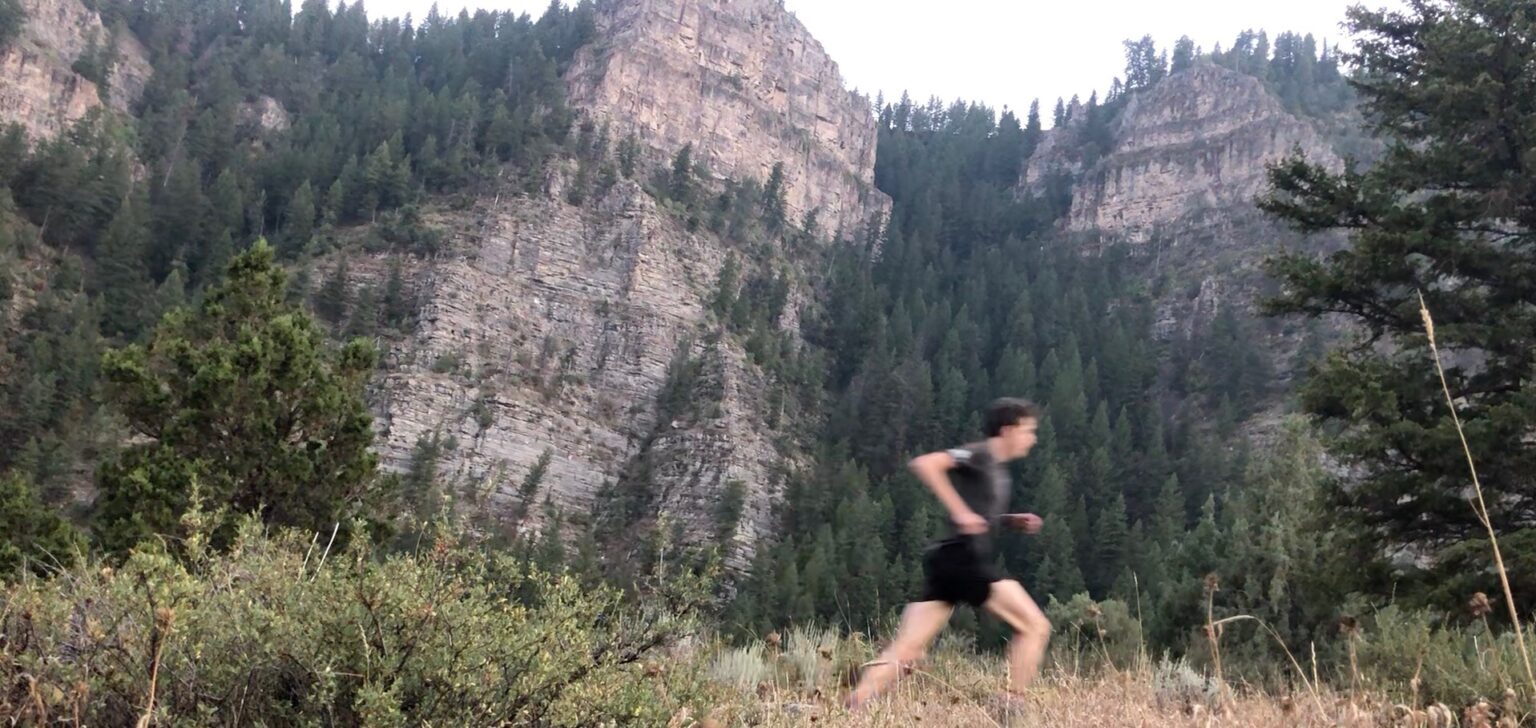
Of course, it’s important to note that “average” isn’t a bad thing — I think the Zinal’s midsole does its job well, it just doesn’t necessarily stand out in the world of lightweight trail racing shoes. For my preferences, I think a shoe like the Adidas Terrex Speed Ultra feels faster — even though it’s a bit heavier than the Zinal — because the Speed Ultra provides noticeably more energy return. At the end of the day, I don’t think the Zinal’s midsole is a major plus or minus for the shoe’s overall performance — it doesn’t stand out as being especially energetic, but it also doesn’t keep the Zinal from feeling reasonably fast, efficient, and cushioned.
Outsole
It’s pretty clear from looking at the Zinal’s fairly minimal outsole that Hoka’s priority here was minimum weight and not necessarily maximum grip — which I think works out just fine for a shoe like the Zinal. As I mentioned in the “Weight” section, the Zinal uses Vibram’s MegaGrip Litebase compound with fairly low-profile lugs in the forefoot and heel, while the rest of the shoe’s outsole is just exposed midsole foam, in an effort to reduce weight.
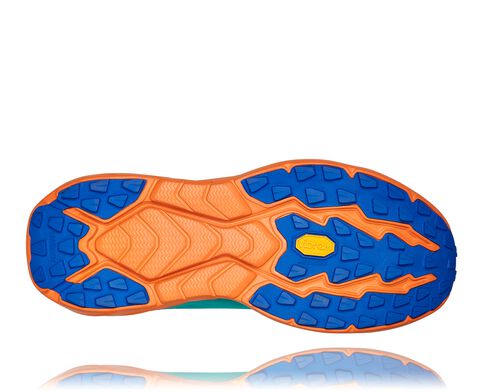
In practice, the Zinal’s outsole provides plenty of grip on moderate terrain, but I’ve found that it struggles a bit on steep, loose terrain. The Zinal feels fairly similar to a shoe like the Altra Timp 2.0 or Nike Terra Kiger 5 on dry terrain — although the Zinal’s MegaGrip Litebase outsole compound provides much better traction on wet rocks/roots than the Timp or Terra Kiger. On steep, loose, and / or muddy terrain, the Zinal is noticeably less grippy than a shoe like the La Sportiva Cyclon or Hoka One One EVO Jawz. I think the rest of the shoe’s design (e.g., unstructured upper and medium-high stack height) are better suited to less technical terrain anyways, so I never really thought that the Zinal’s outsole inhibited its performance on the kind of terrain in which I liked the shoe the most. With that said, I’m always skeptical about durability when a shoe has lots of exposed midsole foam in the outsole, so I’ll definitely be keeping an eye on how the Zinal’s outsole wears as I rack up more miles in the shoe.
On Trail
Over the course of my first 100 miles in the Zinal, I’ve used it for everything from long runs with lots of climbing and technical terrain to shorter interval workouts on smooth gravel paths. Hoka says that the Zinal is ideal for shorter, faster efforts on technical terrain, but after testing the shoe in a variety of settings, I’m not sure I entirely agree.
As I’ve mentioned a few times throughout this review, the Zinal’s fit isn’t quite as secure / locked down as I’d prefer for super steep, technical terrain. It’s not that the shoe feels sloppy — the minimal, fairly unstructured upper just isn’t quite supportive enough to keep my feet from sliding around a bit on steep terrain. On top of that, the Zinal’s fairly low-profile outsole doesn’t provide much traction on the steep, loose, technical trails around Logan. It’s perfectly adequate for more mellow terrain, but I’ve definitely done a fair amount of slipping around in the Zinal on particularly steep / loose descents.
So while Hoka says the Zinal is a great shoe for technical terrain, in my experience the shoe performs much better on less extreme trails. Personally, I’d opt for something like the La Sportiva Cyclon or Hoka EVO Jawz for more technical outings. But on more moderate and non-technical terrain, the Zinal does feel smooth, fast, and efficient. The PROFLY midsole feels similar to the POWERFLOW+ midsole on the Inov-8 Terraultra G 270 — it doesn’t feel quite as springy and energetic as the Hoka EVO Speedgoat’s CMEVA midsole, but it still feels plenty efficient during faster-paced interval workouts.
The Zinal also works just fine on my medium-length runs (2-3 hours). I personally probably wouldn’t wear it for anything much longer than that, primarily because of its fairly narrow toe box, but it provides plenty of cushion / protection to keep my feet from feeling beat up after 2-3 hours in the shoe.
Overall, I think the Zinal is a good lightweight option for both day-to-day training runs and for interval workouts on moderate terrain. That’s not really what Hoka says the shoe is designed for, but I don’t think that subtracts from the fact that the Zinal is a pretty solid shoe. It feels light, fast, and efficient on both slower-paced training runs and during interval sessions — I just think it’s a bit lacking when it comes to performance on steep, technical terrain.
Durability
You’ve probably heard me say it before, but I always pay extra attention to durability with lightweight / race-oriented shoes like the Zinal. And as I said earlier in the review, I’m already a little concerned about the Zinal after my first 100 miles in the shoe. The thin, minimal mesh upper is looking just fine so far, with the exception of the poorly reinforced lace eyelets that I mentioned in the “Upper” section. I’m still expecting the shoe to last another one or two hundred miles, but at this point, the lace eyelets definitely seem like its weakest link.
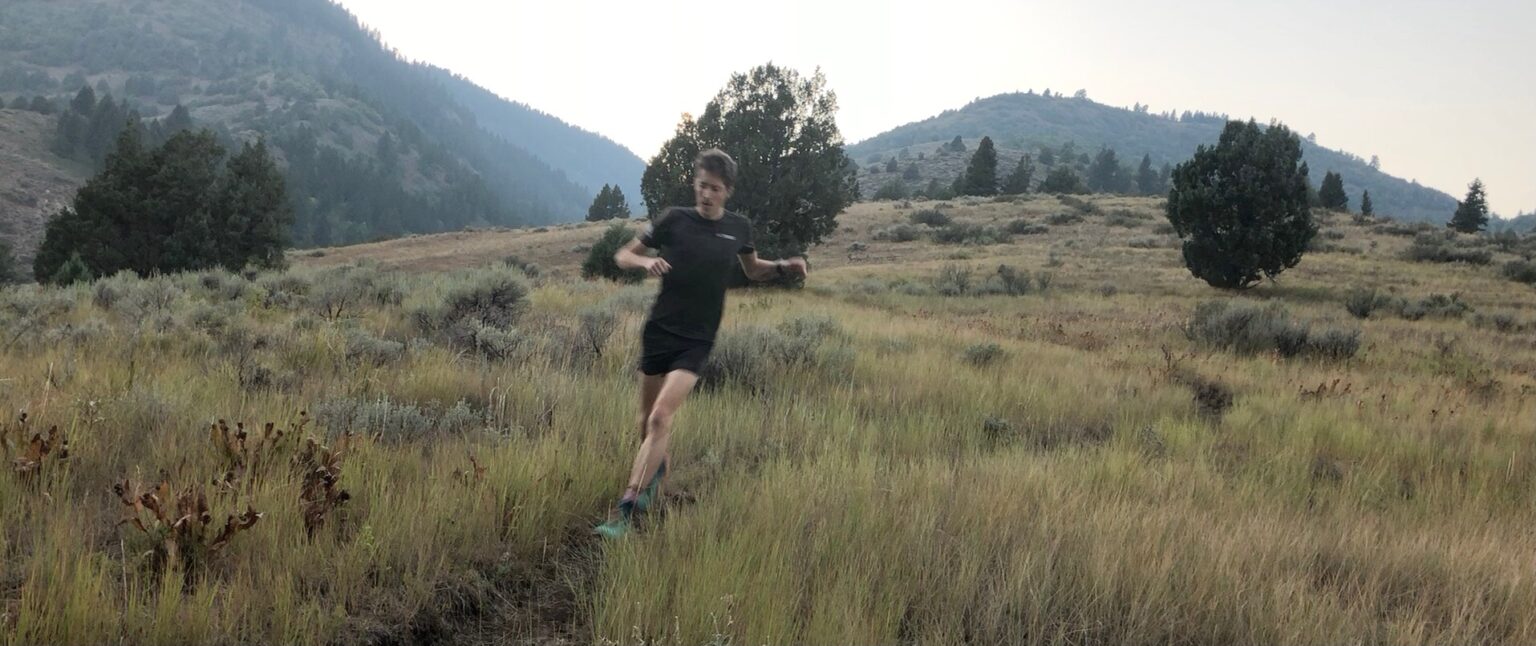
On the bright side, the midsole and outsole look and feel just about the same as they did out of the box — there’s a bit of outsole wear, but that’s to be expected after 100 miles of use on fairly rocky, unforgiving terrain. I’m also keeping a close eye on the exposed midsole foam in the outsole, as I’m expecting that to wear out more quickly. So far it seems to be holding up as well as can be expected, but I’ll be sure to update this section down the road with a longer-term perspective.
Who’s It For?
I think the Zinal is a solid shoe for runners who want a light, nimble-feeling shoe for moderate terrain. I think the Zinal’s upper isn’t necessarily best-suited for super steep, technical terrain, and I’d prefer a slightly wider toe box for runs over 3 hours in length. But for mid-length runs on mellower terrain where I want a lightweight, efficient-feeling shoe, the Zinal has definitely become one of my go-to options. Personally, I think the Zinal makes a good shoe for both day-to-day training runs, interval workouts, and / or races, but if you’re concerned about durability, it might be wise to keep it as a workout / race-day shoe.
Bottom Line
The Hoka One One Zinal is not, in my opinion, the best shoe for short, fast efforts on technical terrain, as Hoka says it is — but I do think it’s a solid all-round shoe for less technical trails. I’m personally a big fan of lightweight shoes that don’t feel like they’re getting in my way out on the trails, and the Zinal fits that description to a tee. I think it could be a more versatile shoe if it had a slightly wider toe box and a slightly more durable, supportive upper, but as is, I think the Zinal is definitely a worthy option for runners who want a truly lightweight, but still fairly versatile and cushioned trail shoe.

